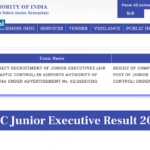In a country as vast and diverse as India, education remains one of the most powerful tools for social upliftment and economic advancement. Yet, for millions of students, financial limitations act as a significant barrier to accessing quality education. To address this challenge and promote equitable learning opportunities, the Government of India launched the National Scholarship Portal (NSP) — a digital platform that centralizes and streamlines the process of applying for various scholarships provided by central, state, and other government bodies.
This blog explores the vision, functionality, benefits, and latest updates of the NSP, giving students a complete guide to navigate this transformative platform.
What Is the National Scholarship Portal (NSP)?
The National Scholarship Portal is a one-stop digital platform for applying, processing, verifying, and disbursing scholarships offered by the Indian government. Launched under the National e-Governance Plan (NeGP) and now a key part of the Digital India initiative, NSP aims to ensure transparency, reduce paperwork, and eliminate duplication in the scholarship process.
The portal integrates a wide range of scholarships from various government ministries, including:
- Ministry of Minority Affairs
- Ministry of Social Justice and Empowerment
- Ministry of Tribal Affairs
- Ministry of Education
- Ministry of Labour and Employment
- UGC and AICTE
- Various state governments
Why Was NSP Introduced?
Before the NSP was established, students had to apply for different scholarships via multiple offline and online platforms. This not only created confusion but also increased the likelihood of fraudulent claims and errors in disbursement. NSP solves this by:
- Centralizing all schemes in one portal
- Ensuring direct benefit transfer (DBT) to the student’s bank account
- Minimizing errors and discrepancies through Aadhaar-linked verification
- Improving transparency and efficiency in monitoring fund flow
Who Can Apply Through NSP?
The portal is designed to serve students from all sections of society. However, eligibility criteria depend on the specific scholarship scheme. Generally, to apply through NSP, a student must:
- Be an Indian citizen
- Be enrolled in a recognized school, college, or university
- Meet the minimum academic qualifications as prescribed
- Belong to a particular income group, minority, or caste category as per scheme requirements
- Not be availing any other scholarship from a government source (for most schemes)
Students from SC, ST, OBC, minority, economically weaker sections (EWS), and persons with disabilities (PwD) are the primary beneficiaries under various schemes available on NSP.
Types of Scholarships Available on NSP
1. Central Government Schemes
Offered by various central ministries for pre-matric, post-matric, undergraduate, and postgraduate studies.
2. State Government Schemes
Each state and union territory offers its own scholarships, accessible via NSP.
3. UGC/AICTE Schemes
For students pursuing technical, professional, or higher education.
Examples include:
- Post Matric Scholarship for SC/ST Students
- Merit-cum-Means Scholarship for Minority Students
- Pragati Scholarship for Girl Students in Technical Education
- Ishan Uday for students from the North Eastern Region
Recent Updates: NSP 2.0
With the launch of NSP 2.0, the platform received significant upgrades in 2025:
- One-Time Registration (OTR): A unique 14-digit ID created using Aadhaar or Aadhaar Enrollment Number
- Face Authentication: Mandatory biometric verification using the NSP mobile app
- Faster Disbursal: Improved integration with Aadhaar and DBT for prompt payments
- Mobile Integration: NSP is now available via UMANG and NSP mobile apps for better accessibility
- User Interface Overhaul: A more intuitive dashboard, application history, and real-time tracking options
How to Register and Apply on NSP
Step 1: One-Time Registration (OTR)
- Visit the official NSP portal
- Click on “New Registration”
- Enter basic details and verify using Aadhaar number or enrollment ID
- Perform face authentication via mobile app
- Get a 14-digit OTR number
Step 2: Login
- Use your OTR number and OTP to log in
- Set a secure password
Step 3: Fill in the Application
- Personal details
- Educational qualifications
- Scheme selection
- Upload required documents
Step 4: Final Submission
- Review all fields
- Submit the form (once submitted, no edits are allowed)
- Track status on the dashboard
Documents Required
While the list may vary by scheme, the general documents required include:
- Aadhaar card or enrollment ID
- Bank account details (preferably Aadhaar-linked)
- Income certificate
- Caste or minority certificate (if applicable)
- Disability certificate (for PwD students)
- Academic marksheets and certificates
- Bonafide certificate from institution
- Fee receipt (sometimes required)
Disbursement Process
Once verified by the institute, district, and ministry level, the scholarship is disbursed directly into the student’s bank account via the Direct Benefit Transfer (DBT) system. This ensures no middlemen or delays, making the process transparent and efficient.
Scholarship Amounts
Amounts vary widely depending on the scheme. For example:
- Pre-Matric Scholarships: ₹500 to ₹1200 per year
- Post-Matric Scholarships: ₹2000 to ₹10,000+ per year
- Merit Scholarships: Can range from ₹10,000 to ₹25,000+
- Top-Class Scholarships: Up to ₹2 lakh per year for premier institutions
Common Challenges Faced by Students
Despite NSP’s advantages, many applicants encounter the following issues:
- Technical errors in OTR or face authentication
- Delays in institute verification or district-level approval
- Lack of awareness about required documents
- Submission beyond the deadline
- Unregistered institutions making students ineligible
To mitigate these, students should start early, maintain correct documents, and regularly track their application status.
Impact of NSP So Far
Since its inception, the NSP has seen remarkable success:
- Over 1.35 crore applications processed annually
- Disbursement of ₹1,800+ crore in scholarship funds
- Streamlined over 150+ central and state schemes
- Empowered minority, SC/ST, and EWS communities
It has not only reduced dropout rates but also increased enrollment and retention in higher education.
Future of NSP
Looking ahead, the NSP is expected to integrate more state-level schemes, bring automation in document verification, and provide AI-based support systems for better user experience.
Upcoming features may include:
- Real-time helpdesk chatbots
- WhatsApp integration
- Pre-filled application data
- AI-powered fraud detection
Conclusion
The National Scholarship Portal stands as a revolutionary step in ensuring educational access and affordability for students across India. With NSP 2.0, the government has doubled down on transparency, efficiency, and inclusiveness. By centralizing scholarship applications and disbursements, it removes traditional hurdles and empowers students to pursue their academic aspirations without financial distress.
Every eligible student must leverage this opportunity. Whether you’re a school student, a college-goer, or pursuing technical education—NSP is your partner on the path to success.
To apply or know more, visit the official portal: https://scholarships.gov.in










